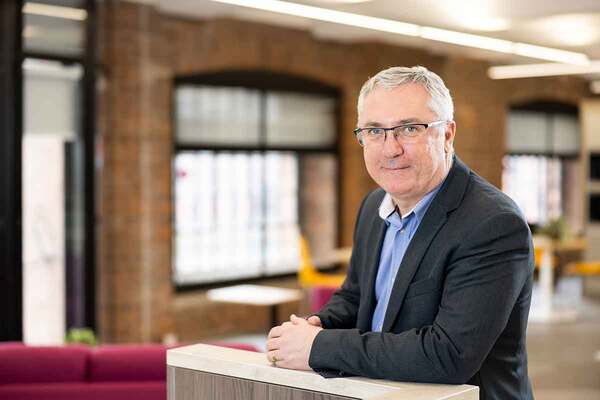What is the most effective path to retrofit?
Julie Godefroy, head of net zero policy at the Chartered Institution of Building Services Engineers (CIBSE) and co-author of the recent Retrofit Revisit report, outlines the benefits of a fabric-first approach in energy-efficient housing retrofits
Moving towards zero carbon emissions and improving the quality of homes are twin objectives that can be achieved with effective retrofit programmes. The social rented sector has already made progress, with many engaging in retrofit programmes across their stock.
Nevertheless, there remains a significant number of substandard homes.
Research by the Building Research Establishment highlights that over 22,600 social rented homes in England have a problem with excessive cold, while damp was cited as a problem in 5% (200,000) of all social rented homes in England.
In 2023, 10% of the four million social rented homes in England alone did not meet the Decent Homes Standard.
This is a particularly acute issue for social housing, where 56% of households in England include one or more members with a long-term illness or disability.
Grant funding is available through various sources. The main schemes currently in operation are the Social Housing Decarbonisation Fund in England, the Social Housing Net Zero Heat Fund in Scotland, the Optimised RetroFit Programme in Wales and the European Regional Development Fund in Northern Ireland.
The question for the retrofit teams is, Which measures will most effectively provide both immediate impact and long-term performance?
“The most significant changes that can improve the energy efficiency of existing dwellings are: improving airtightness and increasing insulation to reduce demand, and the installation of heat pumps”
The most significant changes that can improve the energy efficiency of existing dwellings are: improving airtightness and increasing insulation to reduce demand, and the installation of heat pumps. Common insulation measures include the addition of cavity or solid wall insulation, loft insulation, and double or triple glazing.
While it is relatively easy to test airtightness improvements, it is less straightforward for insulation measures. In addition, it is important to test what impact these measures have had on actual outcomes, including comfort and heat demand, both short and long term. The Retrofit Revisit project, co-led by myself at CIBSE and Marion Baeli, then a partner at Studio PDP (now sustainability transformation principal at 10 Design), was established to do this, looking at the long-term performance of past best-practice retrofits.
Supported by Innovate UK (part of UK Research and Innovation) and Historic England, as well as in-kind contributions from project partners, Retrofit Revisit investigated how 10 housing projects of varying archetypes and locations were performing 10 years after their original retrofit.
Under Retrofit Revisit, the 10 homes (nine houses and one flat) selected for the Retrofit Revisit research included six pre-1919 properties. Some were tenanted housing association properties, others occupied by private owners.
All the projects were considered best practice at the time, and all employed a ‘deep retrofit’ approach, aiming towards 80% CO2 reduction. Insulation strategies varied across the properties, with a mix of external, internal and cavity insulation, of permeable and impermeable materials. Retrofitted heating, hot water and ventilation systems also varied across the sample.
All 10 projects underwent a rigorous building performance evaluation, which included an assessment of fabric, energy efficiency, indoor environment, airtightness and user feedback.
Then, as now, a fabric-first approach was fundamental to the energy-efficiency improvement strategies for all properties. The evaluation teams found that the fabric efficiency improvements implemented continued to be effective, with heat demand remaining very low compared with the national average. Notably, most residents reported they were satisfied or very satisfied with their energy bills.
Compared with the robust performance of the fabric-first approach, the teams found that residents often struggled with controls for the retrofit heating and hot water systems. This had already been identified at the original evaluation of the retrofit and remained an issue over time. Users often found these “too complicated” and “not giving them enough control” and sometimes even “failing to provide the right amount or temperature of water”.
The research also showed that mechanical ventilation with heat recovery (MVHR) systems were reliable, even though this was a relatively innovative technology at the time.
“Compared with the robust performance of the fabric-first approach, the teams found that residents often struggled with controls for the retrofit heating and hot water systems”
The importance of regular maintenance in optimising the performance of buildings, regardless of their retrofit status, was also highlighted. Neglected components such as gutters and ventilation filters were found to have resulted in problems like water ingress and inadequate air quality. This highlights that easy-to-maintain retrofitted homes are more likely to stand the test of time, whereas those with complex maintenance requirements will not.
The study also highlights just how much the retrofit industry has evolved in the past 10 years. Eight out of the 10 homes studied had a gas boiler installed as part of the retrofit, several had solar thermal hot water heating, but only one had photovoltaic panels (PVs). The common approach now would be for an all-electric system, typically a heat pump, with roof-mounted PVs, rather than opting for solar thermal.
Although it only focused on 10 homes, the Retrofit Revisit project shows that, when done well, retrofit can provide huge energy savings and deliver comfortable homes with high satisfaction for tenants. This should give confidence to the industry and policymakers alike that retrofitting the UK’s homes at scale is possible and necessary if we are to ensure that everyone can live in a good-quality, energy-efficient home.
Julie Godefroy, head of net zero policy, Chartered Institution of Building Services Engineers
Sign up for our asset management newsletter
Already have an account? Click here to manage your newsletters













